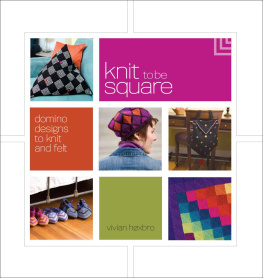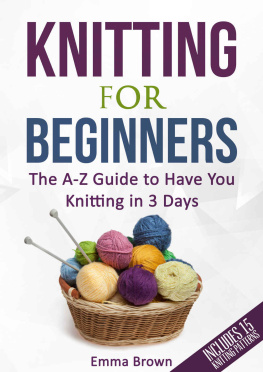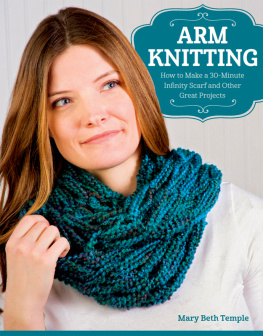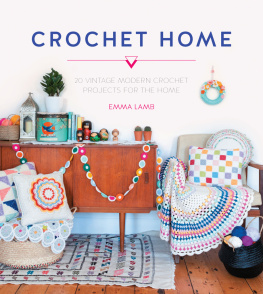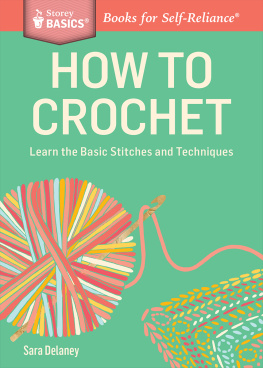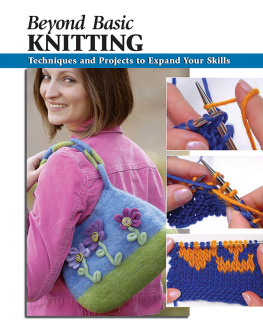DOMINO
KNITTING
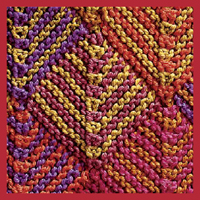
Vivian Hxbro
Translated by Carol Huebscher Rhoades

Translation: Carol Huebscher Rhoades
Design and Layout: Dean Howes
Charts and Drawings: Vivian Hxbro
Photography: Bjrn Jakobsen
2000 originally published in Norwegian by J.W. Cappelens Forlag
2002 English translation published by Interweave Press, Inc.

| Interweave Press 201 East Fourth Street Loveland, Colorado 80537 USA www.interweave.com |
Library of Congress Cataloging-in-Publication Data
Hxbro, Vivian.
Domino knitting / Vivian Hxbro.
p. cm.
Includes index.
ISBN 978-1-93149-911-8 (pbk)
ISBN 978-1-59668-987-9 (PDF)
ISBN 978-1-62033-205-4 (ePub)
1. Knitting. 2. KnittingPatterns. I. Title.
TT820 .H815 2002
746.4320432dc21
2002005720
Thank you to all those who have knitted the pieces for the book and to my friends who served as photo models. Thanks also to Masai Clothing for kindly loaning the garments for the photographs.
Contents
In Summary
By Subject
Techniques
Borders
Finishing and Care
Miscellaneous
I N 1993, I WAS ATTENDING a handcraft fair in Germany and noticed a huge crowd at one stand. I could just barely see a bearded man demonstrating a different way to knit. That man was Horst Schulz. Later, I travelled to Berlin and took a course with him. It was on the new knitting as he called it, and was lively and enthralling. The Danish knitting guild, Gavstrik, sponsored a contest to select a name for the technique. The winner was Domino Knitting, a fine and amusing name which has stuck.
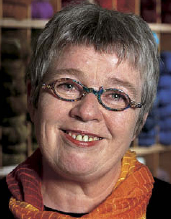
In domino knitting, pieces are knitted together while the work progresses, just as one pieces the tiles in dominoes. For more than a century, people have knitted this way. They knitted shawls with domino patterns on the Faroe Islands and pieced coverlets in the same manner in Canada and England. In the United States, I found a copy of a pamphlet from 1946 with the sweetest jacket, knitted in domino squares by Virginia Woods Bellamy. In 1952, she published a book on the technique, called Number Knitting.
From the first moment I saw the domino knitting techniques demonstrated, I was intrigued by the many possibilities of this knitting method. I have worked with domino knitting in a simple, Nordic way and feel that it is very important that the garments I make will be comfortable to wear and will look nice with simple accessories.
Domino knitting is not as stressful on the knitters arms and shoulders as other kinds of knitting. Domino is knitted on short, preferably wooden, needles or circular needles, and you knit with only a few stitches at a time. Even if you are knitting a large blanket, you only turn the short needles and the little section you are working on when you shift from right to wrong side.
There is no getting away from the fact that domino knitting is slower but who says that we have to knit quickly? We knit for the sake of enjoyment today, dont we? Who wants something fun to end quickly? Not I!
With this book, I hope to share my enthusiasm with everyone who would like to partake of it. It is so much fun to knit small pieces with short needles and to see the work growing up and out. Domino knittings possibilities are endless. But wait! Once youre hooked, youre caught. Domino knitting is addictive.
Vivian Hxbro
B e kind to yourselfonly the best equipment is good enough!
Needles
A pair of domino needles is absolutely indispensable. The needles are only about 8" (20 cm) long, with a knob on one end, so that the needle ends wont get stuck in your clothes or your knitting. You can buy them or you can use double-pointed needles with a bead tightly fastened onto one end of each. My needles are rosewood, a wonderful, flexible wood which the stitches glide across. You will also need a circular needle and a short needle (use a wooden needle about 4" [10 cm] long or a cable needle) for crossing the cables.
Why domino needles? With long needles, you use more arm movement when turning the work. With short needles, you reduce this movement to a minimum.
Other Things You Will Need
Stitch markers, blunt tapestry needles, some safety pins, measuring tape, a cable needle, cotton tacking thread, a crochet hook, scissors, and a pen are all useful items to have on hand. If you are following a chart or diagram for the knitting, you can make a photocopy, cut out the chart and put it with the other things. Keep it neat and handy in a plastic sleeve so it is easy to carry around.
On , you can read about yarn and gauge.
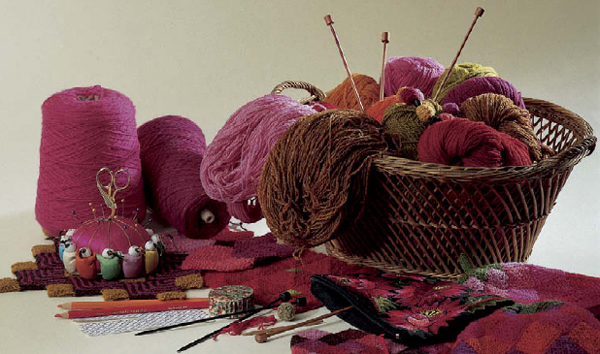
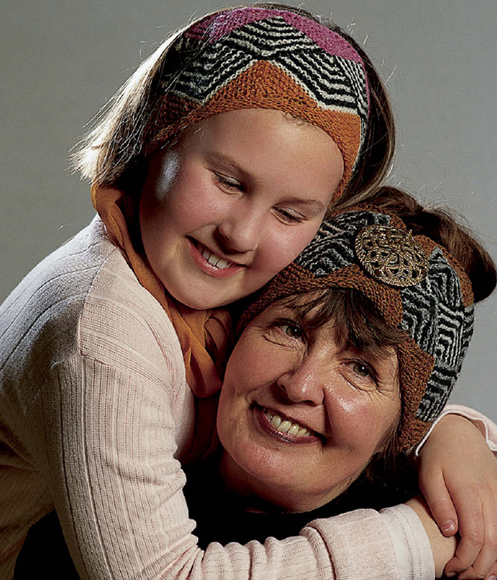
L earning doesnt need to be boring. In this section, you will be introduced to the techniques of domino knitting while you knit the festive potholders made with squares and strips, a smart turban, or a headband for yourself or a lucky child in the family.
Then, you are educated and can forge ahead with larger projects, working either from your own imagination or from the patterns in the book.
You dont need to knit all the potholders. The section, Technique, in each pattern tells you which potholder demonstrates the techniques needed for that pattern.
If the pattern refers to a potholder you havent knitted yet, you should do it before you begin the larger piece.
Potholders 14 show how you knit squares and how you knit them together.
Turban/Headband shows how squares are knitted together in a ring.
Potholders 58 show how strips are knitted together.
Borders: Each of the eight potholders has its own border which can be used on many other items.
Enjoy!
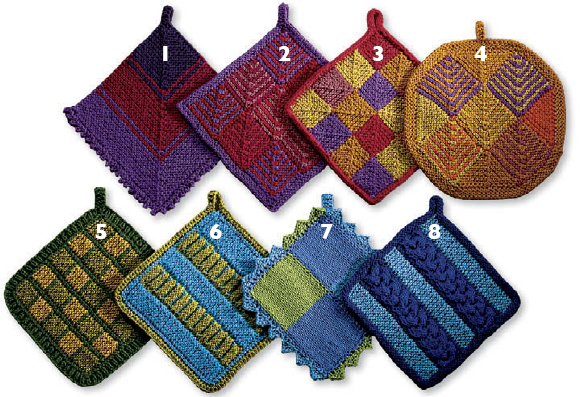
T hese squares are the starting point for many wonderful hours of knitting, so ready, set, go! Here you have instructions for nine different squares. The first is explained completely; the other squares are variations of the first. Knit squares 1 and 2 plus one or more of the others, so that youll understand how they work. Then you will be ready to continue by learning how to join the squares while you knit.
Yarn: Use what you have on hand. The squares in the photos are knitted with a thick cotton yarn, Paris from Garnstudio.
Colors: For these squares, Ive used curry, orange, rust, pink, burgundy, and red-violet.
Needles: Dn (or dpn) in a size suitable for the yarn.
Technique: Basic Squares 19.
Number of stitches: 25.
Basic Square 1
Garter stitch, single color
Color: Curry.
This square is a simple, garter stitch square. For abbreviations, see ) 25 sts on dn (= domino needles)
Next page

